Photo Journal: RDC Arctic Technology Evaluation 2018
The Coast Guard Research and Development Center is conducting its annual operation in the Arctic, Arctic Technology Evaluation 2018, in Prudhoe Bay, Alaska, July 21 to Aug. 3. This year’s research will focus on evaluating how unmanned aircraft systems (UAS), unmanned surface vehicles (USV) and an aerostat balloon can work together as a network, and includes search and rescue and environmental mission scenarios.
July 29, 2018 – West Dock, Prudhoe Bay, Alaska
Moderate temperatures (50 degrees land, 43 degrees sea), cloudy skies with
abundant sunshine in the afternoon. Wind direction ESE at 15 knots.

The Research and Development Center team utilizes a small boat for testing in Prudhoe Bay. The AeroVironment Puma unmanned aircraft system (UAS) is deployed for an extended range test which spanned over four nautical miles. U.S. Coast Guard photo by Alexandra Swan.

The Puma UAS and the Coast Guard’s unmanned surface vessel (USV) are deployed together to test the feasibility of using multiple unmanned systems as a communications link over larger areas. The Puma has the capability of being landed in the water, allowing for easier recovery from smaller vessels during maritime operations. U.S. Coast Guard photo by Alexandra Swan.

To further evaluate the use of unmanned systems in oil spill recovery missions, a safe red dye was used to simulate an oil spill. The Splash Drone collects a sample of the dyed water with the USV ready for transport over longer distances. U.S. Coast Guard photo by Alexandra Swan.

The RDC team returns from boat operations in the bay with the unmanned systems. U.S. Coast Guard photo by Alexandra Swan.

Researchers wrap up the day’s operation with the USV. U.S. Coast Guard photo by Alexandra Swan.
July 28, 2018 – West Dock, Prudhoe Bay, Alaska
Cold temperatures (38 degrees land, 32 degrees sea) with overcast skies
and heavy rain. Wind direction East at 15 knots.

The Research and Development Center team prepares the AeroVironment Puma unmanned aircraft system (UAS) for operation off a small boat. The UAS was deployed with the Silent Echo Direction Finder payload and completed coastal surveillance and search pattern mission vignettes. U.S. Coast Guard photo.

At West Dock, part of the RDC teams mans an alternate ground control station with the BlueSky mast and radio network, monitoring live feed video of the flight and a map of the flight pattern. The ground control team also operated and monitored the Remote Autonomous Broadband Information Transmission Terminal (RABITT) for the Silent Echo mission. U.S. Coast Guard photo.
July 27, 2018 – West Dock, Prudhoe Bay, Alaska
Cold temperatures (39 degrees land, 41 degrees sea), with overcast skies and morning
precipitation clearing in the afternoon. Wind direction East at 13 knots.
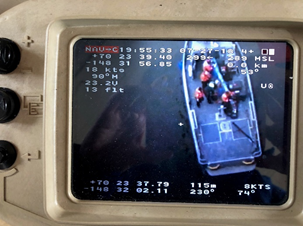
One of the scenarios on the agenda for the Research and Development Center (RDC) team was creation of a system network. The network consisted of five components – a Helikite tethered aerostat, an AeroVironment Puma unmanned aircraft system (UAS), the Alaska Clean Seas vessel Arctic Rose, a BlueSky mast antenna, and Tactical Operations Command (TOC) – all connected with a Persistent Systems Man Pack Unit 5 (MPU5) radio. The network was successful, allowing total communication and visibility for all components. Here ground control is viewing images from the UAS. U.S. Coast Guard photo.

After the MPU5 radio is mounted on the bottom of the Helikite aerostat, its tether is slowly unrolled. U.S. Coast Guard photo.
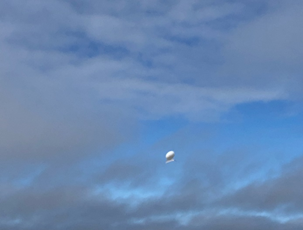
The Helikite in position approximately 50 feet in the sky. Using the aerostat increases the height of eye, extending the network. U.S. Coast Guard photo.
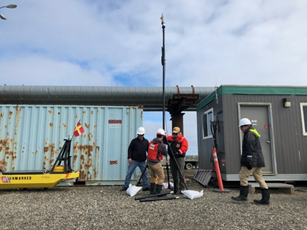
A BlueSky mast is set up as part of the system network. U.S. Coast Guard photo.
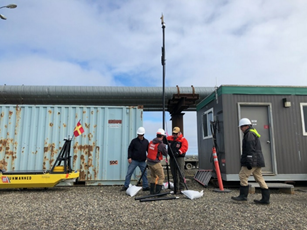
The day’s oil spill simulation demonstration and system network creation were viewed by District 17 Intelligence and Response Enforcement office membersand American Chemical Society, BP and Conoco Phillips representatives. U.S. Coast Guard photo.
July 26, 2018 – West Dock, Prudhoe Bay, Alaska
Cold temperatures (42 degrees land, 32 degrees sea), with overcast and foggy skies
and morning precipitation. Wind direction N/NW around 10 knots.
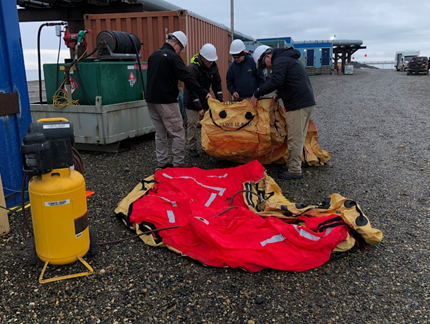
Research and Design Center (RDC) team members prep the target raft for a search and rescue scenario. Unmanned aircraft systems (UAS) involved in this testing are the AeroVironment Puma and Wasp and the PSI Instant Eye. U.S. Coast Guard photo by Alexandra Swan.
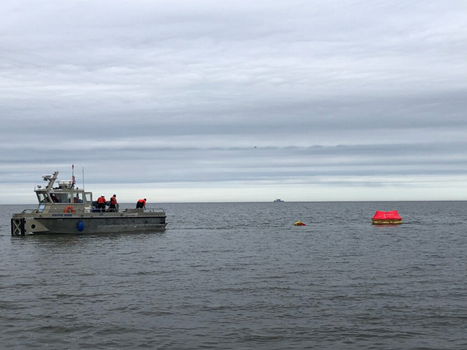
A target raft and thermal Oscar are released in the cold water for use as realistic search and rescue targets for the UAS. The scenario was designed to evaluate the ability of the UAS to detect the two targets and send visual images and location information back to the ground station. U.S. Coast Guard photo by Alexandra Swan.
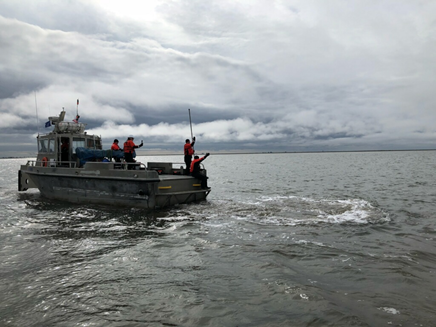
Researchers land the Wasp UAS in the water for recovery following one of the test runs. U.S. Coast Guard photo by Alexandra Swan.

An RDC team member operates Octocopter-X8 for the first time as part of Arctic testing. U.S. Coast Guard photo by Alexandra Swan.
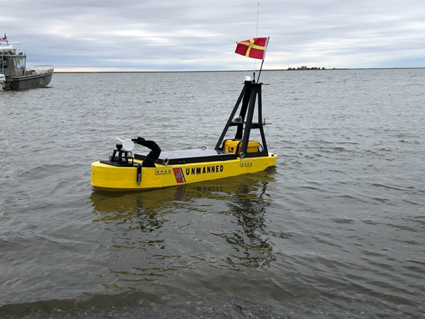
RDC researchers devised a robotic arm to operate on the Coast Guard-created unmanned surface vessel for use in oil spill operations. The robotic arm collects water samples that can be tested to determine the extent of the spill. The robotic arm was added for this year’s Arctic Technology Evaluation. U.S. Coast Guard photo by Alexandra Swan.
July 25, 2018 – West Dock, Prudhoe Bay, Alaska
Cold temperatures (42 degrees land, 32 degrees sea), overcast
and foggy with occasional precipitation. Wind WNW/E around 10 knots.
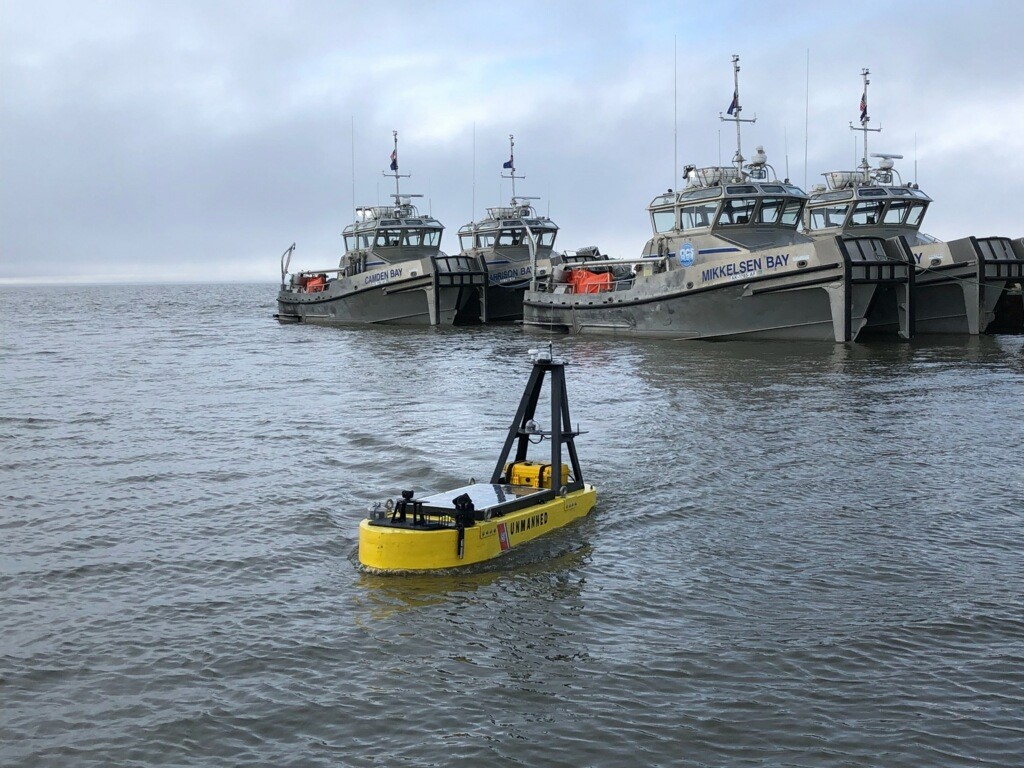
An unmanned surface vessel (USV) built by the RDC is back in the Arctic after proof of concept testing last year. This year, it will be tested as part of mission scenarios involving oil spill notification and information relay. U.S. Coast Guard photo by Alexandra Swan.
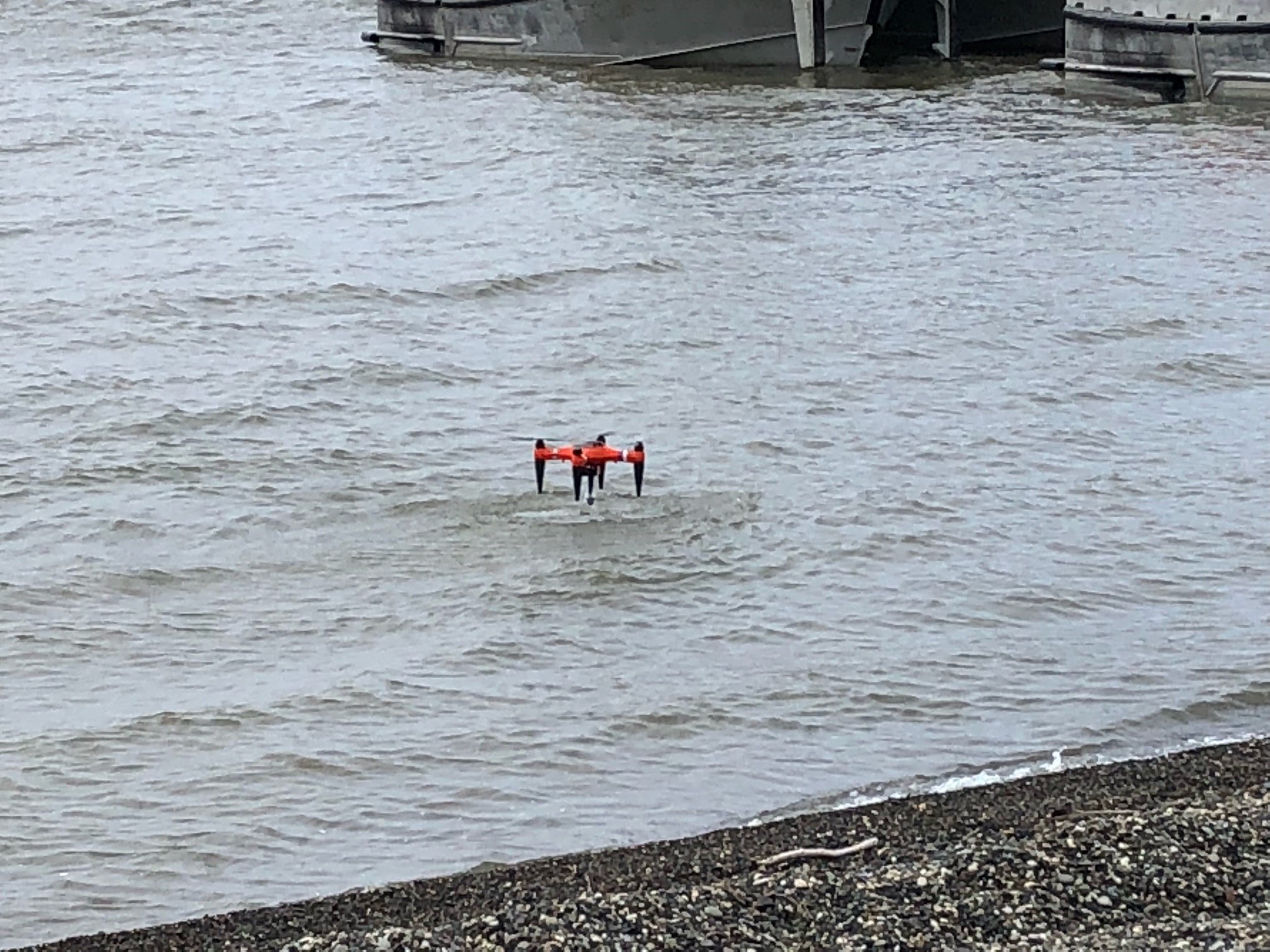
A commercial Splash Drone is being evaluated for its use in oil spill operations. The unmanned aircraft system hovers close to the water, lowering a collection container to retrieve a water sample that can be tested for oil contamination when the UAS returns to base. U.S. Coast Guard photo by Alexandra Swan.
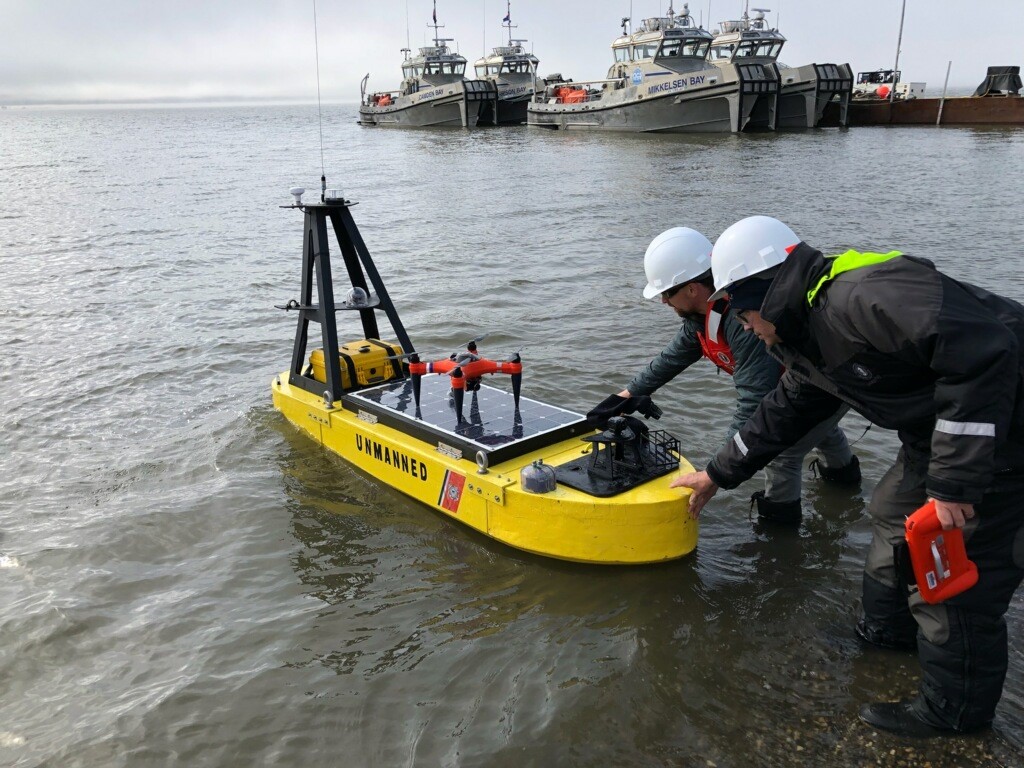
RDC researchers test the effectiveness of pairing the USV and the Splash Drone on a mission. U.S. Coast Guard photo by Alexandra Swan.
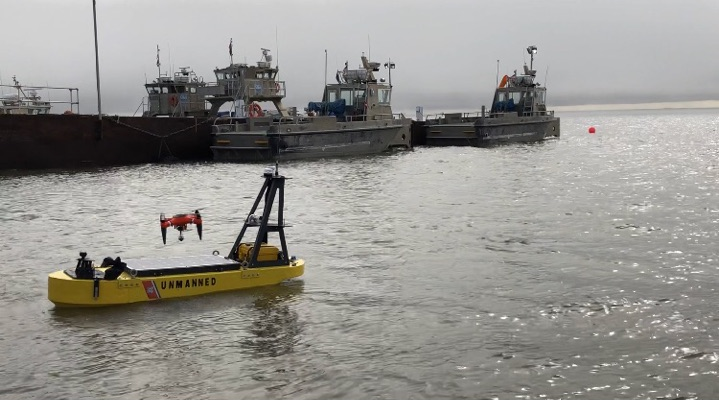
The team was able to successfully demonstrate both takeoff and landing of the UAS on the USV. U.S. Coast Guard photo by Alexandra Swan.
July 23, 2018 – Prudhoe Bay, Alaska.
Moderate temperatures (42-48 degrees), overcast conditions with intermittent fog
and no precipitation. Wind direction N/NNE around 5 knots.
Researchers from the Coast Guard Research and Development Center initiated operations for the 2018 Arctic Technology Evaluation today. Transporting, unpacking and assembling were among the major activities for the day. Here RDC team members assemble the unmanned surface vehicle developed by the center. U.S. Coast Guard photo by Alexandra Swan.
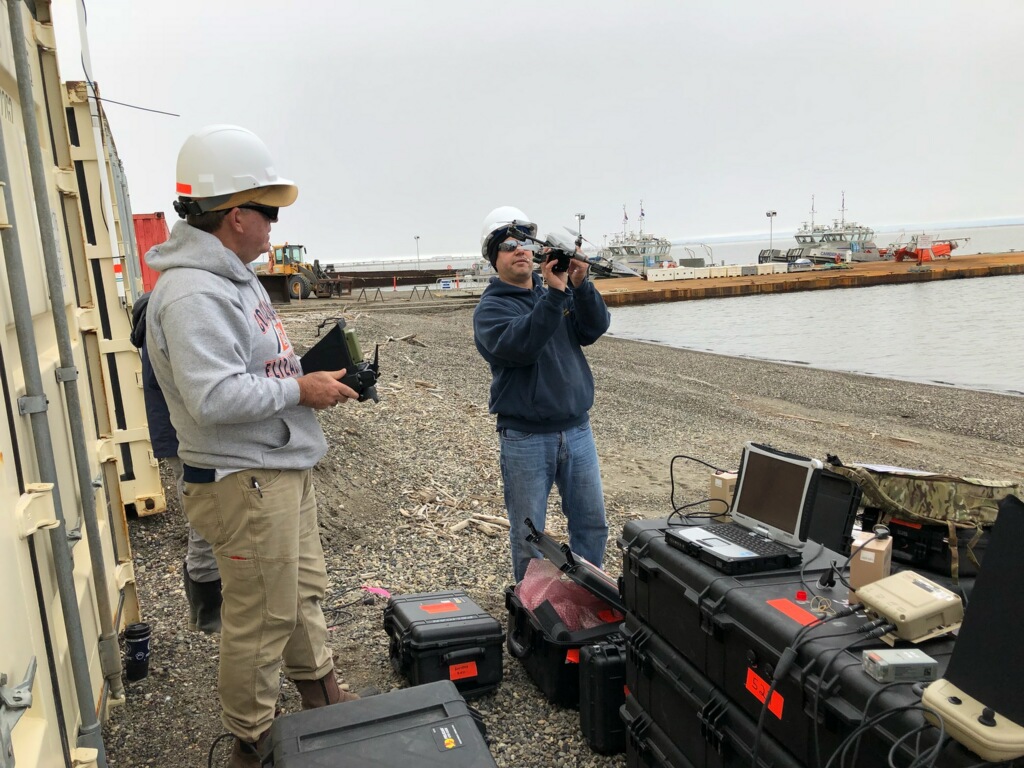
RDC team members get ready for one of four unmanned aircraft system (UAS) sorties with the PSI Instant Eye, Generations 3 and 4. The team evaluated various fixed payloads, including a Forward Looking Infrared Quark camera. These UAS scenarios are part of geographical location evaluations for the Robotic Aircraft Sensor Program for Maritime. U.S. Coast Guard photo by Alexandra Swan.
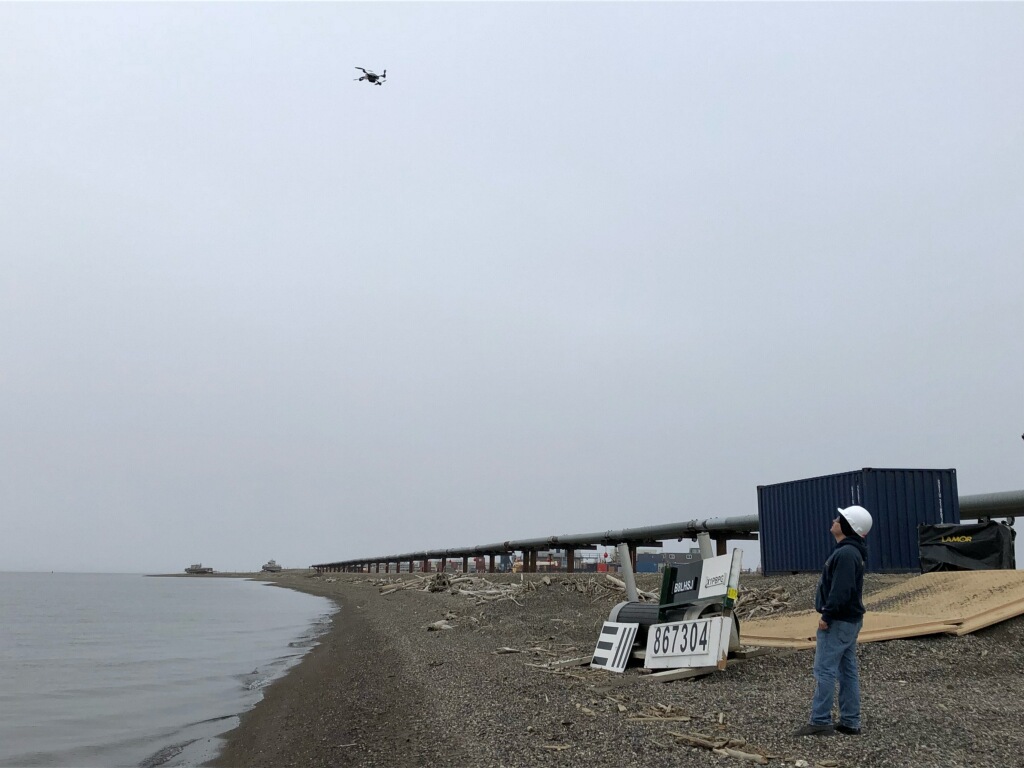
The team is conducting flight testing using letter boards (on shore) to develop Tactics, Techniques and Procedures and Concept of Operations for identifying 3-, 4- and 12-inch letters and numbers. These are the sizes generally used for vessel identification markings. A board based on Johnson’s Criteria is also being used to analyze the probability of detection with various visual sensors. U.S. Coast Guard photo by Alexandra Swan.
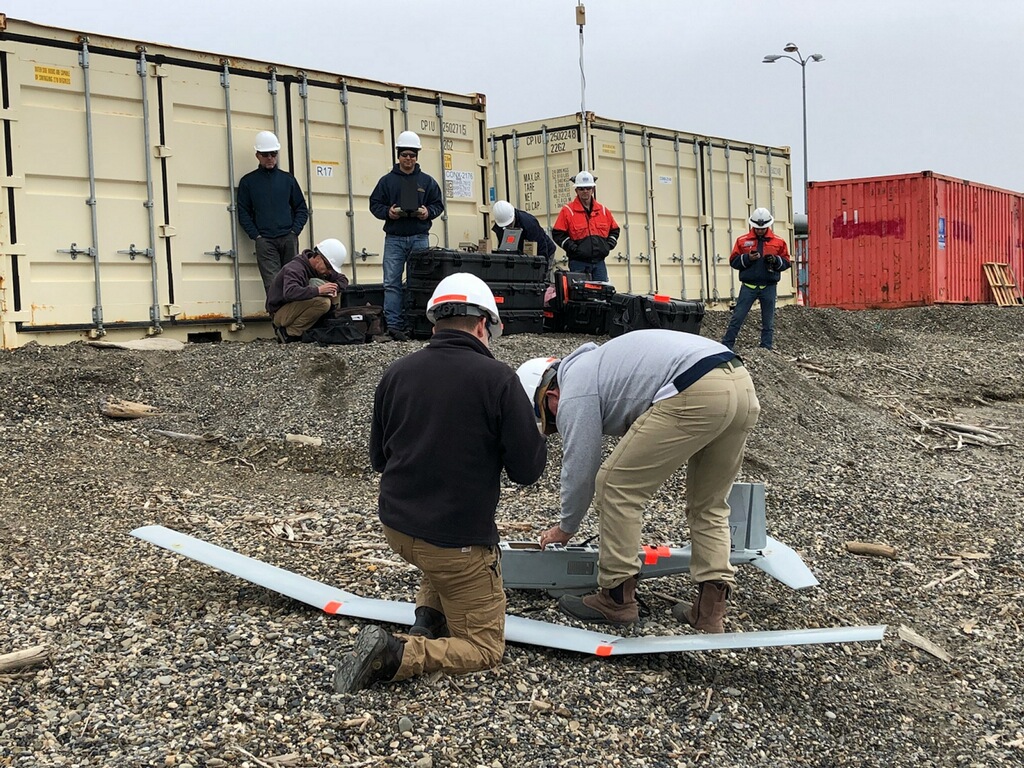
RDC team members assemble the Puma 2 unmanned aircraft system for testing, but heavy fog conditions forced cancellation of the day’s planned flights. U.S. Coast Guard photo by Alexandra Swan.